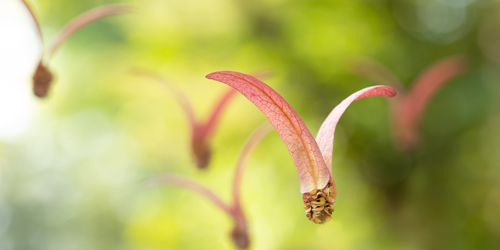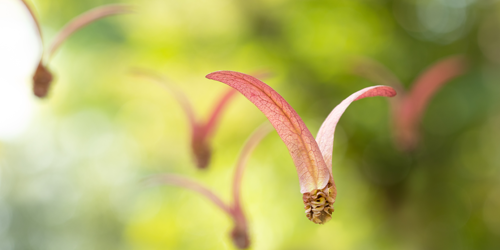Optimum Wings for Flying Fruits
Many trees rely on the wind to spread their seeds and invade new territory. To increase this wind dispersion, certain tree varieties have evolved seeds or fruits with wing-like appendages that slow their fall, allowing the wind to carry them further. Trees in the dipterocarp family, for example, produce a multiwinged fruit that spins around as it falls, generating lift like a helicopter. Andreas Carlson from the University of Oslo, Norway, witnessed large numbers of these whirling fruits while attending a biophysics conference in Vietnam. Fascinated by the flying behavior, he began researching the underlying physics. Using theory and experiments, he and his colleagues have now shown that these fruits’ wing shape maximizes the lift.
The team first derived a theoretical description for the terminal descent velocity, showing how it depends on the area swept out by the rotating wings. The researchers assumed that trees only devote a certain amount of energy (or mass) to the building of wings. Under this fixed-mass constraint, they investigated this question: What curved shape would give the slowest descent velocity? They parametrized the curvature by the fold angle, which is the wing’s length divided by its radius of curvature. To test different shapes, the team used a 3D printer to fabricate several artificial two-winged fruits with various fold angles. They dropped these “faux fruits” into a water tank and recorded their rotational motion during descent. Those with a fold angle of roughly 100° had the slowest descent. This optimum shape was found to be in close agreement with the observed shape of natural wings from 27 species of trees with whirling fruits or seeds. Understanding the mechanics of the fruits’ flight may help policy makers in designing conservation plans for plants threatened by environmental pressures.
This research is published in Physical Review Letters.
–Michael Schirber
Michael Schirber is a Corresponding Editor for Physics based in Lyon, France.





